Everything You Need to Know About the Courthouse Steps Quilt
The Courthouse Steps quilt is an oldie. A reeeaaaal oldie. We’re talking civil-war-era-old. But the courthouse steps quilt pattern hasn’t lost its visual charm, or its meaningful history – and I’m about to prove it. Get ready for everything you never knew you never knew about the Courthouse Steps quilt pattern. (And yeah, I’ll throw in a top-secret important tip for your next Courthouse Steps project, too!)
I'm pretty selective when it comes to the quilt books I allow on my small book shelf. I do, however, LOVE this one by Denyse Schmidt – Modern Quilts, Traditional Inspiration. There's a fantastic Courthouse Steps pattern in there that you get a glimpse of on the cover.
The Courthouse Steps Quilt Pattern is a Variation of a Log Cabin Pattern.
Now that you’re thinking about it, I’m sure you can see the similarities between the Courthouse Steps quilt pattern and the Log Cabin quilt pattern. I absolutely love the history behind these quilts. I think that a good quilt history makes a quilt feel even warmer. Don't you?
Old Log Cabin quilts were made with a red square in the center of each block, representing the hearth of the cabin. The “cabin walls” were made with light fabric strips on two sides, and darker fabric strips on the other two sides, to represent the sun shining on one side of the cabin, casting shadows on the other. Isn’t that the most charming thing you’ve ever heard? You can read more about Log Cabin Quilt patterns here!
The Courthouse Steps quilt pattern had perfectly symmetrical strips on alternate sides of the center square, instead of “wrapping” around the square like the Log Cabin pattern. Because of this symmetry, each row of strips resembles… you guessed it! The stairs of a courthouse. Courthouses were central fixtures in the 1800s, so the symbol of the courthouse stairs would be familiar and meaningful to quilters of this era.
Trending patterns!
You May Also Like...
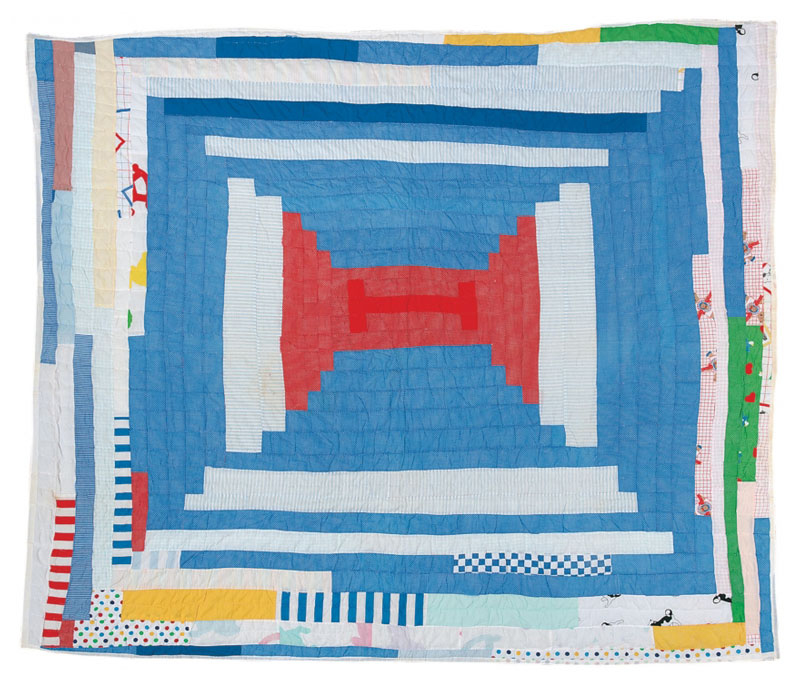
The first quilt in this post, plus this quilt and the one below were made by Loretta Pettway between 1958 - 1980. These designs were first published in Gee's Bend, The Women and Their Quilts.
Courthouse Steps Quilt Blocks are the Easiest to Sew!
Of all of the different Log Cabin quilt block variations, the Courthouse Steps block is said to be the easiest to sew! This makes it a great choice for quilters that are just branching out from the standard square.
The Courthouse Steps quilt pattern also doesn’t require any extra tools or rulers, or working with a bias edge. It’s just strips and squares. The cool thing about this design, though, is that it makes strikingly different visual effects depending on how the blocks are oriented when sewn together for a finished quilt. Which takes us straight to our next point...
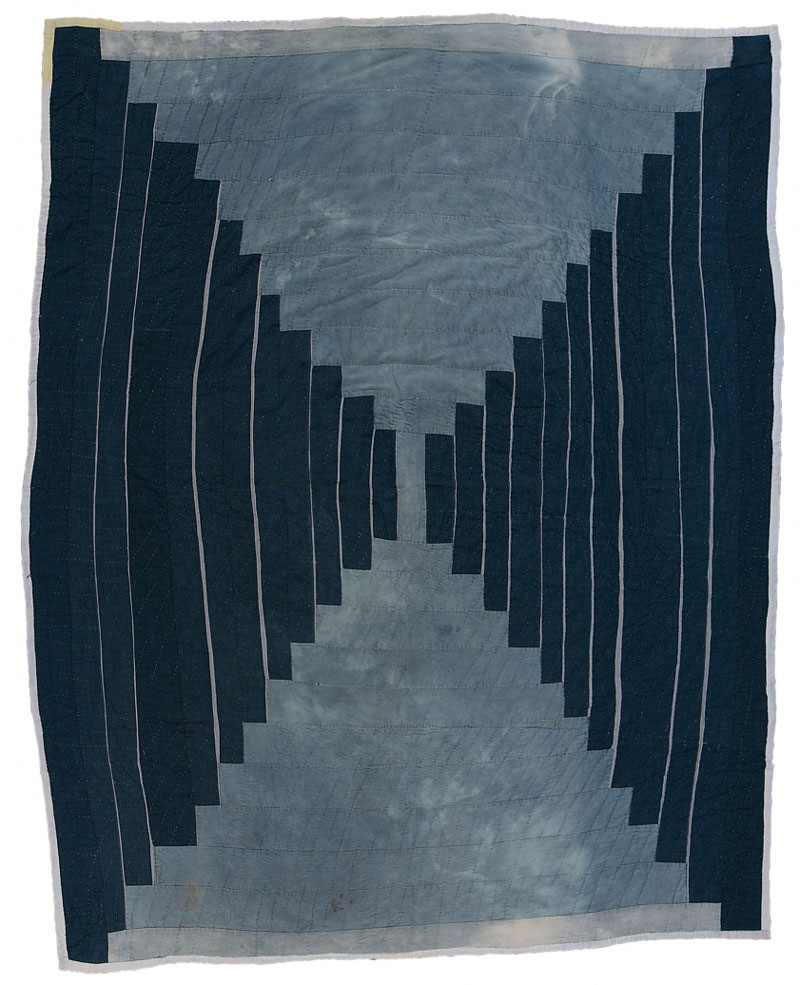
The Courthouse Steps Quilt has so, so Many Beautiful Variations.
You never knew how many different looks you could get from strips and squares… until now. A traditional Courthouse Steps quilt block can achieve a ton of different looks, just by rotating the blocks. Then, if you want to get really crazy, you could try a few different variations within the block itself – like making concentric squares, or experimenting with light and dark colored fabric strips.
Let’s take a look at some modern Courthouse Steps quilts that play around with both color and block orientation. Get ready to have a whole new appreciation for fabric strips...
Initial K Studio
Kristi Schroeder is a dear personal friend of mine and an incredible quilt designer. Like me, she also has a background in graphic design and uses that as the foundation for all of her work. I could go on and on about how beautiful her quilt designs are, or I could just point to the quilt below. Isn't it stunning?
Now here's another exciting treat for you – this is a FREE pattern Kristi designed for Robert Kaufman. What luck! If you enjoy making minimal modern quilts with southwest style, check out her book, Southwest Modern: From Marfa to New Mexico. I made the Zia Mini from that book and loved the finished look!
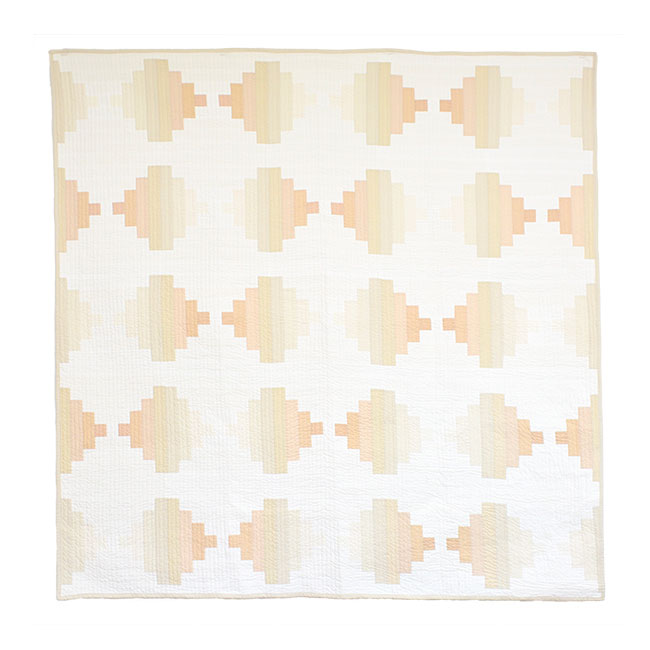
Alexis Deise
Alexis is a textiles artist currently working with traditional motifs and quilting techniques in a more contemporary way. She lives outside of Boston and is a member of the Boston Modern Quilt Guild. As a personal interjection – daaaaang! Isn't she good??
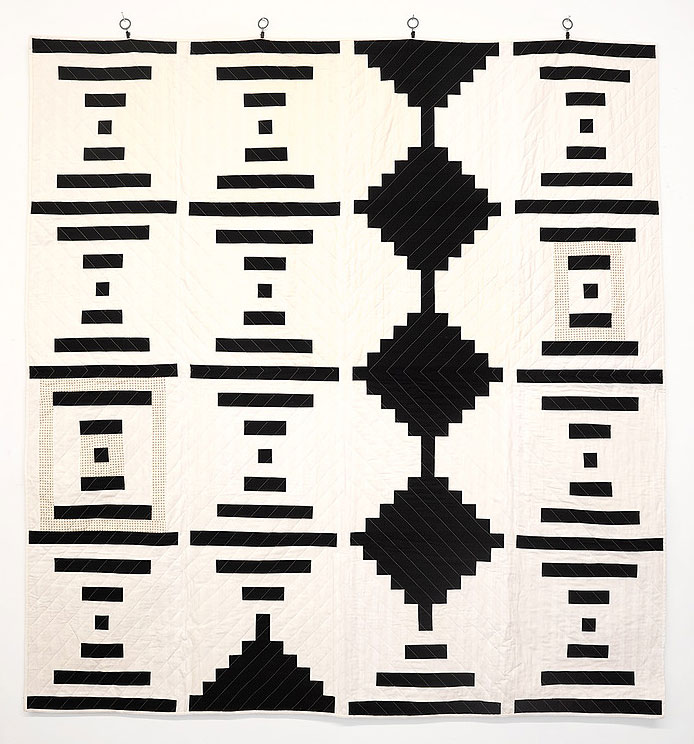
Anna Marie Galvin
Last but not least, Anna Marie Galvin takes the Courthouse Steps block and just keeps on going until it’s a completed mini quilt… and a beautiful one! The mix of woven fabrics from Anna Maria Horner's collection with various shades of white, cream and beige sends my little heart a pattering. Major swoon.
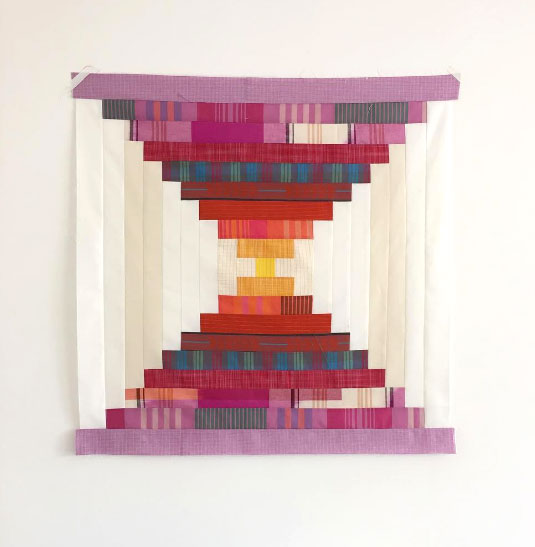
And Now, As Promised, My #1 Tip for Courthouse Steps Quilting!
Are you ready for this? Okay, here it is: when cutting strips for your Courthouse Steps quilt, rip the fabric first to get it on grain. I know it might seem counter-intuitive at times, but cutting on grain will give you less stretchy strips, and really minimize distortion when you start sewing them together.
We recently finished a sew along of the Grow quilt pattern that is made entirely of strips. Below is a video demonstrating how I first rip the edge of the fabric to get it on grain and then cut my strips. This also prevents bowing in the center of your long strips.
Note: don't rip your strips if working with precuts or small scraps of fabric. Ripping can cause you to lose up to 4 inches of fabric and if you're starting out with just a little bit, you may end up with not enough!
Have you already made a Courthouse Steps quilt? What variations did you use? Share your thoughts and, if you have them, links to pictures!
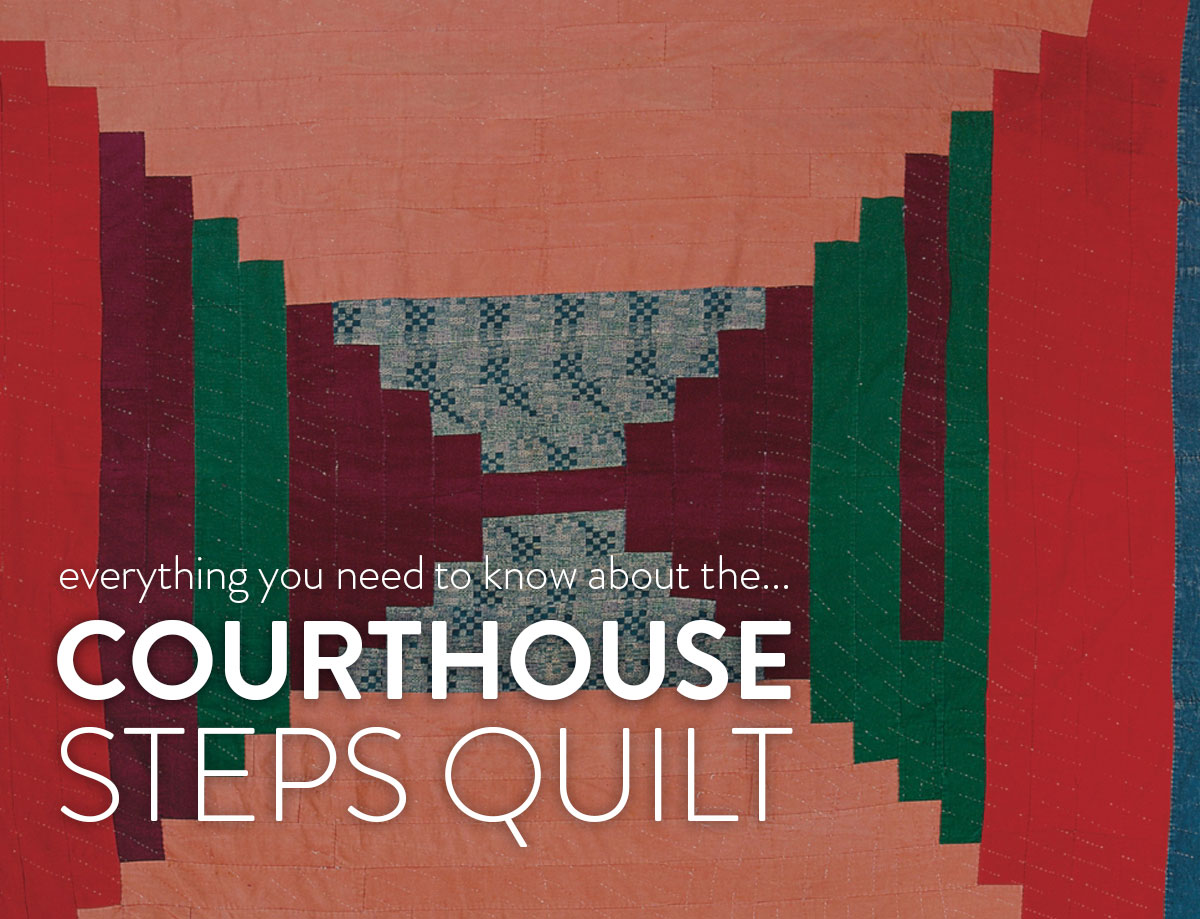
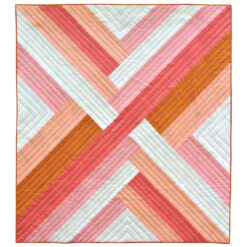
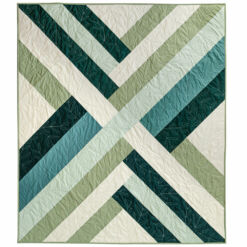
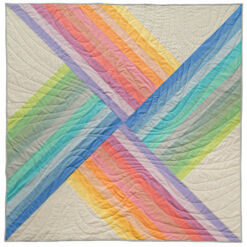
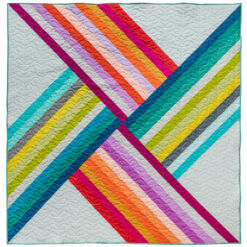
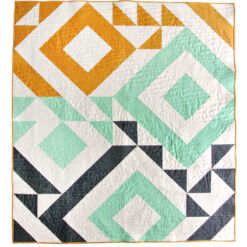
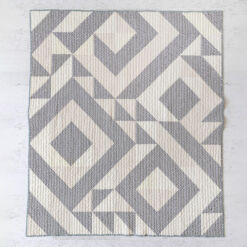
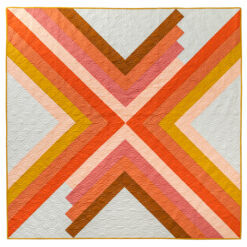
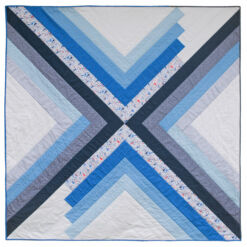
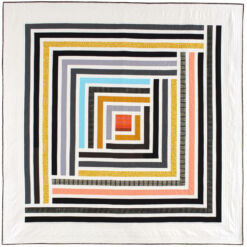
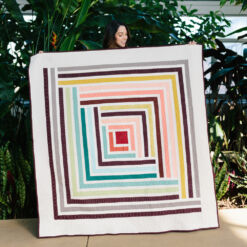
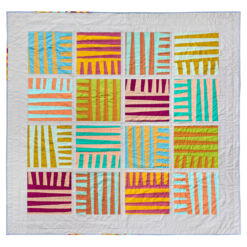
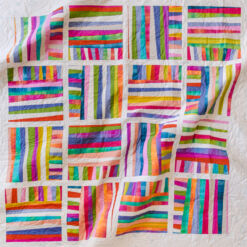
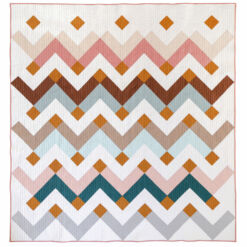
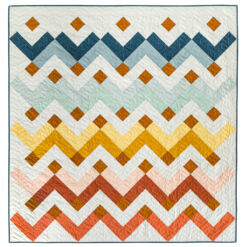
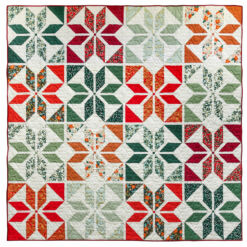
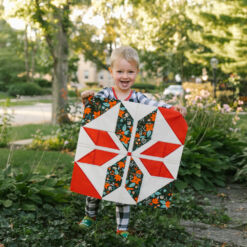
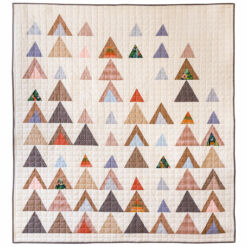
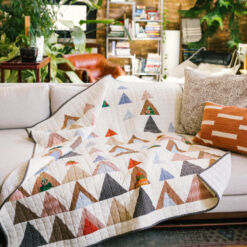

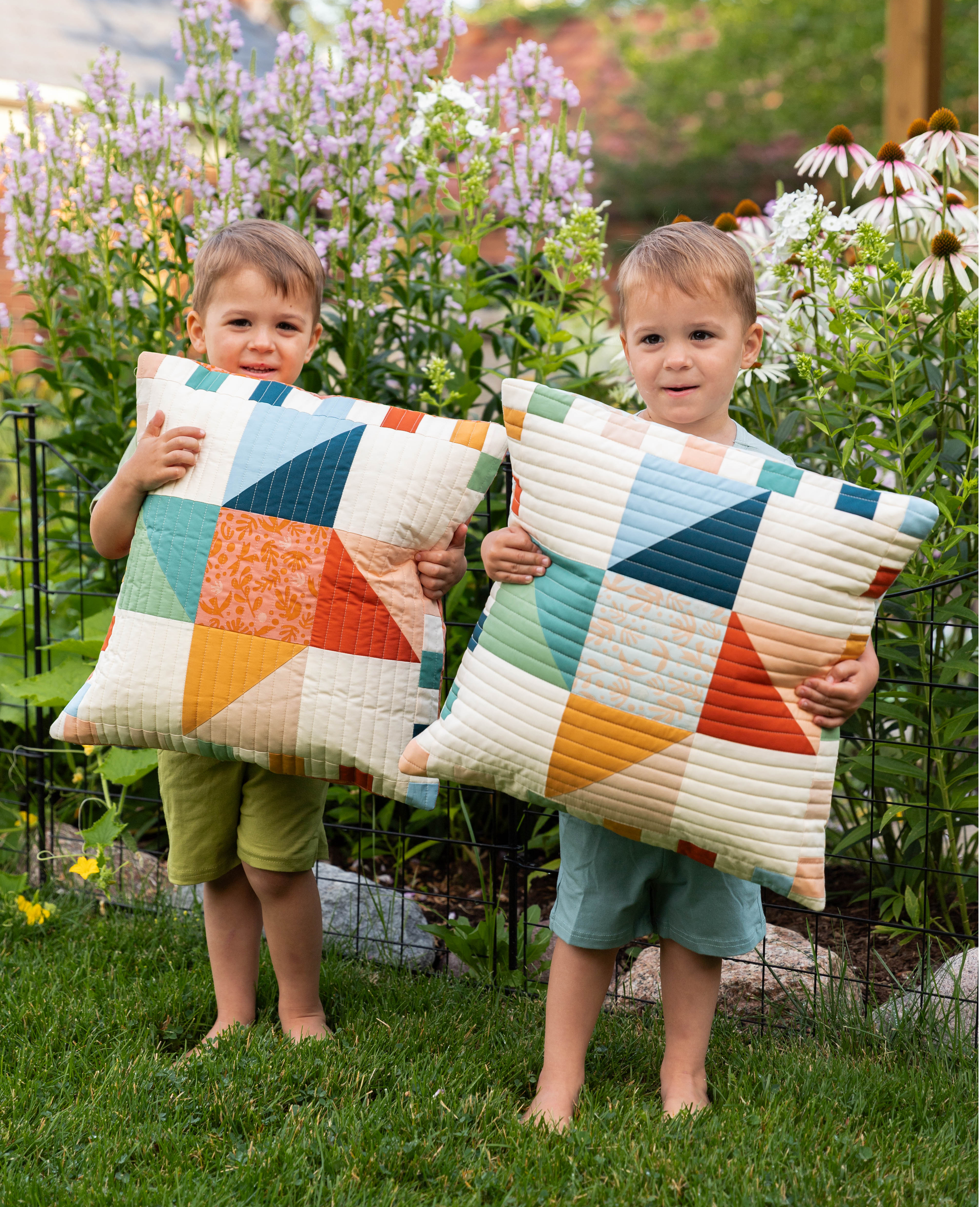

Hi Suzy! I’m gearing up to do my first courthouse steps quilt and of course read this blog post in preparation! I had a question about the secret tip: don’t we normally cut quilt strips with the lengthwise grain? Am I in a quilting twilight zone?